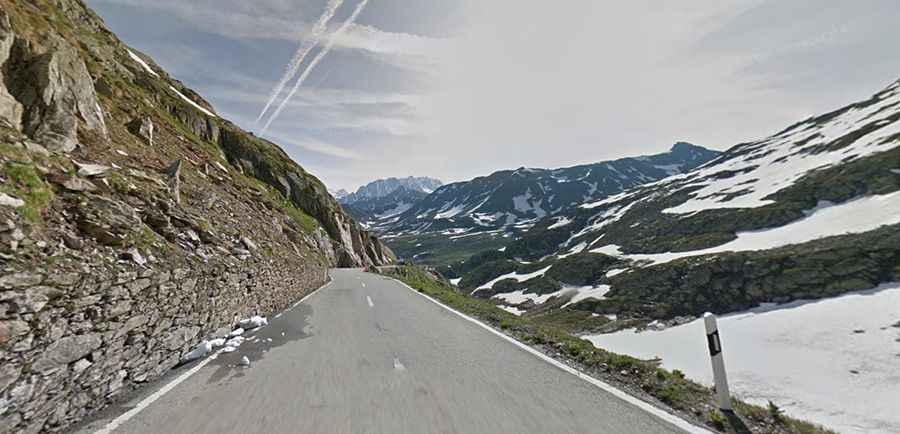Great Saint Bernard Pass is one of the most famous roads in the Alps
Great Saint Bernard Pass is an international high mountain pass at an elevation of 2,469m (8,100ft) above sea level, located on the border of Switzerland and Italy. It’s one of the most famous Alpine roads in Switzerland.

Where is the Great Saint Bernard Pass?
Set high in the heart of the Alps, the pass links the Aosta Valley region of north-western Italy and the canton of Valais in Switzerland. Perhaps the most famous of the mountain passes in the European Alps, with its majestic scenery and diverting views, it is one of the most renowned attractions of the country.
How long is the Great St Bernard Pass?
The road to the summit is entirely paved. It’s called Road 21 (in Switzerland) and Strada Statale 27 (in Italy). The pass is 74.6 km (46.35mi) long, running from Martigny, in the canton of Valais in Switzerland, towards Aosta, the capital of the Valle d’Aosta region, in northwestern Italy.
When was the road through Great Saint Bernard Pass built?
The pass, known as Col du Grand-Saint-Bernard in French and Colle del Gran San Bernardo in Italian, is one of the most ancient passes through the Western Alps. It has been very important for 3,000 years because it was an easy way to cross the Alps. The Roman troops, with Julius Caesar, crossed this pass in 57 BC, and the French troops, with Napoleon Bonaparte and his army of 46,000 soldiers during his march toward Italy, did it in 1800. The pass had long been used as a commercial trade route, though today it serves mostly as a tourist destination for motorists who want to take it slow and soak in the impressive, sometimes perilous, sights along this route. Despite its importance, the Great St. Bernard had to wait until 1905 for a road to be built over the pass, due to disagreements between the authorities in the Valais and the Aosta Valley, as well as technical difficulties.
Is Great Saint Bernard Pass worth it?
The summit hosts a beautiful mountain lake, hotels, and restaurants. The pass is also famous because of a hospice founded in 1049. The hospice later became famous for its use of St. Bernard dogs in rescue operations, first mentioned in 1709, and has become an icon of the Alps. During the 17th century, the monks that maintained the hospice grounds began selectively breeding and training their dogs, which were said to be gifts from travelers and villagers from nearby towns. You guessed it: the resulting breed was the St. Bernard, primarily used during this time to guard the hospice, though later they were used as rescue animals. The monks still maintain the grounds and give comfort and information to travelers today.
Is the Great St Bernard Pass steep?
The pass has been climbed by the Tour de France and the Giro d'Italia bicycle races. Starting from Sembrancher, in Switzerland, the ascent is 30.6 km long with an elevation gain of 1,752 meters. The average percentage is 5.7%. And starting from Aosta, in Italy, the ascent is 32.05 km long, and the elevation gain is 1,878 meters. The average percentage is 5.9%.
Is the Great St Bernard Pass open?
The road to the summit is usually open from the end of May to mid-October, although this can change depending on snowfall and weather each year. Remember, weather in the Alps can be cold at night, even during the summer months, so make sure to pack warm clothes. You might encounter snow even during the summer. The snow in the pass in winter may be as much as 10 meters deep. The temperature may drop as low as -30°C. The lake in the pass is frozen for 265 days per year. A tunnel through the mountains that was built in 1964 allows travelers to make the journey unhindered during the winter, which is good news if you decide to visit during that time. Opened at 1915 meters above sea level, the road link has largely been safe against winter weather since then.
Where was the Italian Job movie filmed?
The iconic opening scenes of the Italian Job movie were filmed here.